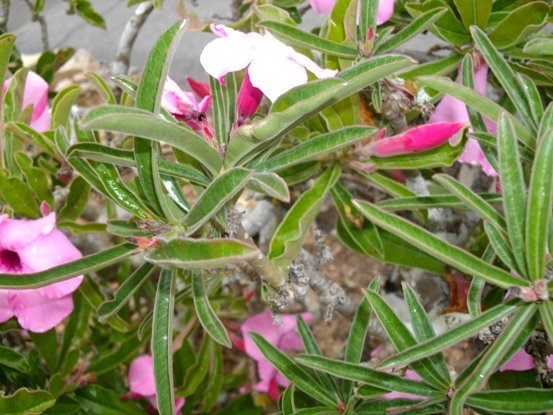Adenium swazicum

Author: Ivan Lätti
Photographer: Ivan Lätti
Adenium swazicum, the summer impala lily, is a smaller plant than A. multiflorum, the well-known impala lily. A. swazicum usually grows to about 30 cm in height with branched, grey or greenish stems that are swollen with succulence. Underground there is more succulence in the plant's large caudex.
The leaf-shape is narrowly oblong to obovate, rounded or tapering at the tip and tapering at the base. The leaves curve up or fold in along the midribs and often downwards lengthways. The pale leaf margins are entire, finely hairy or felty and sometimes tinged red. Leaf colour is dark to pale green, usually still paler on the lower surface.
The plant is found in the east of the Mpumalanga and also in Swaziland, now eSwatini, for which the species is named.
The habitat is the Lowveld, grassy and mountainous bushveld and thornveld where the plants grow in sandy soils. The habitat population is deemed vulnerable early in the twenty first century, due to habitat degradation caused by various human activities. Being hardy and poisonous don't help any longer. Plant collection for the traditional medicine and horticulture trades, as well as sugar cane farming are among the contributing factors (Frandsen, 2017; Smith, et al, 2017; Smith and Crouch, 2009; Onderstall, 1984; iNaturalist; http://redlist.sanbi.org).

